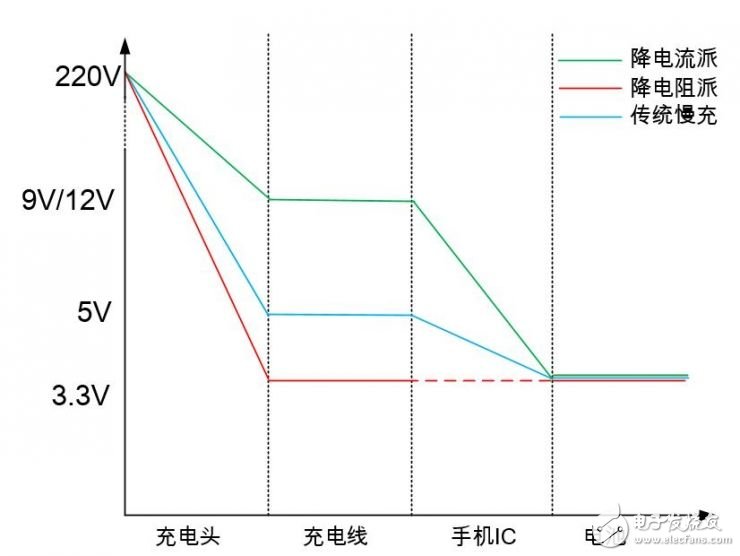Fast charging is a solution to the lack of battery life and has received widespread attention.
Fast charging technology involves two major modules: one is the charging device, including the charging head, the charging line, the mobile phone integrated circuit (IC) and the algorithm; the second is the battery itself. It can be said that the nature of the battery itself determines the potential of fast charging, and the advantages and disadvantages of the charging device lies in the depth and shallowness of the mining potential.

In other words, the nature of the battery itself is "essential". If the battery technology has made great progress, the battery life problem will be solved. But battery technology is limited by physical and chemical boundaries, and it is not that simple to make progress. Therefore, the rapid charging technology of major mobile phone manufacturers mainly refers to innovations in charging devices.
Fast charging technology on the charging device side
Both OPPO's VOOC fast charging technology and Qualcomm's Quick Charge 2.0 technology belong to the fast charging technology of the charging device. The essence of the technology is to increase the voltage/current reaching the battery as much as possible under certain restrictions.
Certain restrictions: For mobile phone batteries, the restrictions are mainly safety conditions and durability. The so-called safety means that the charge is too fast and does not explode; the durability condition means that the charge is too fast to attenuate the life, but not to decay too fast, at least for one year.
As much as possible to increase the voltage/current reaching the battery: OPPO's fast charge promotion emphasizes "low voltage and high current", which will lead to misleading: it feels like saying that it is fast enough for two factions, one is to improve the current pie, and the other is to improve The voltage is the same. In fact, we can simply regard the battery as a combination of a series of resistors and capacitors. At any time, the voltage is a single-valued function of the current, which is one-to-one.
Two technical routes on the charging device side
So, what is OPPO's so-called "low voltage and high current"? Not necessarily, it is just a slogan in marketing. We have all learned Joule's law, heating power = square of current * resistance. When charging quickly, the heating power will be too large, and the interfaces on both the charging and charging lines will not be able to withstand. How can we reduce the heating power? In order to solve this problem, the technical route is divided into two factions:
1) Drop resistance pie: It is OPPO's VOOC technology. The general idea is to thicken the charging cable and expand the charging cable line from ordinary 4-pin or 5-pin to 7-pin. The line is thicker, the cross-sectional area is increased, the resistance is reduced, and the amount of heat is reduced.
2) Current reduction: Charging power = current * voltage, if you want to reduce the current, then you need to raise the voltage. After the voltage is raised at the charging head, the mobile phone integrated circuit is further lowered and charged to the battery. This is consistent with the idea of ​​“UHV†transmission engineering in our country, which is Qualcomm's Quick Charge or MTK PEP.
From the perspective of voltage, compare the traditional slow charge and fall resistance fast charge technology with the current reduction fast charge technology, as shown in the figure below.

Installation Accessory,Encoder Sensor With Coupling,Encoder Sensor Wheel,Sensor Encoder
Yuheng Optics Co., Ltd.(Changchun) , https://www.yhencoder.com